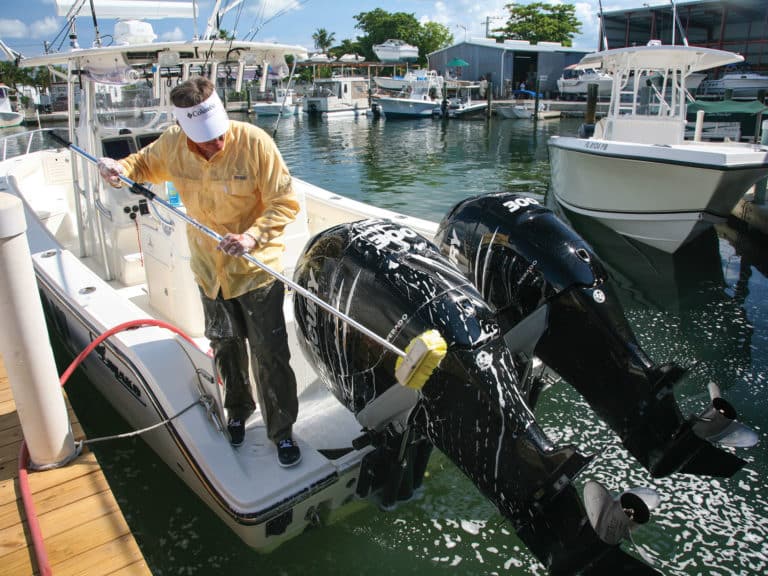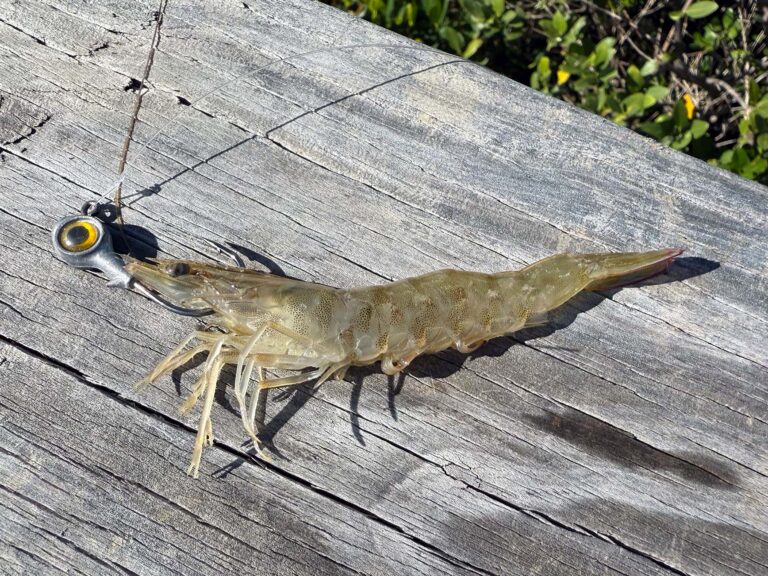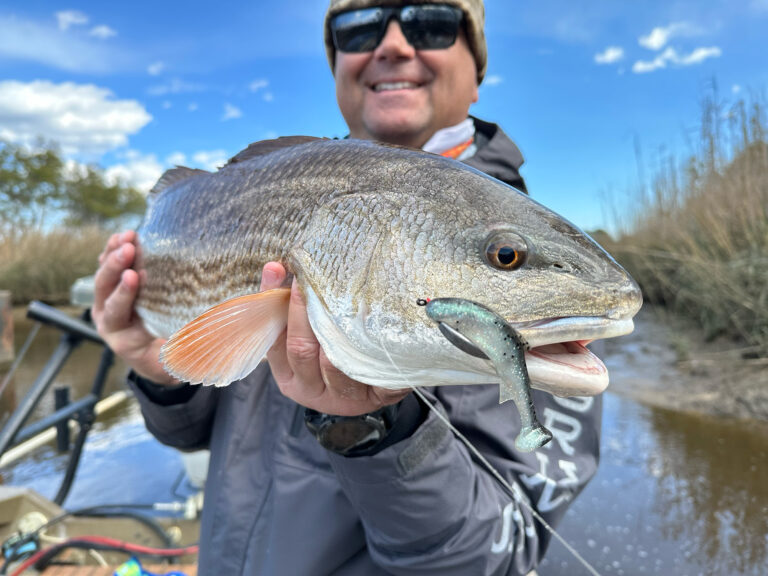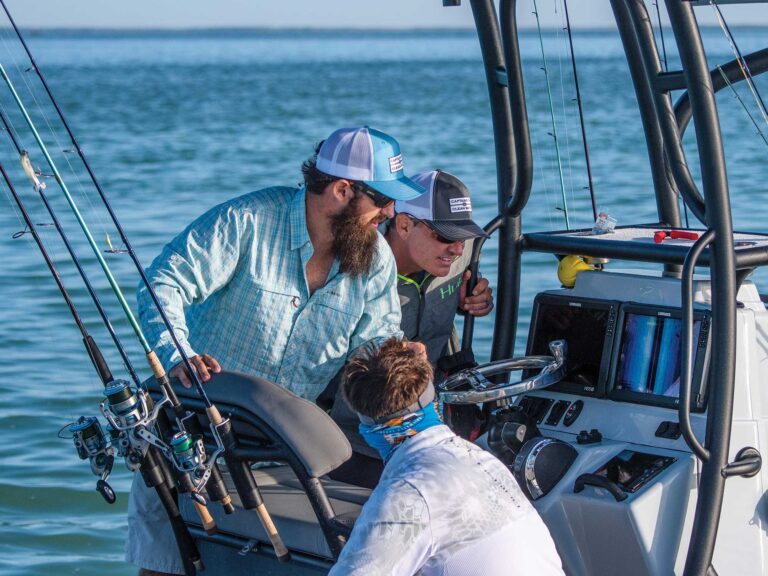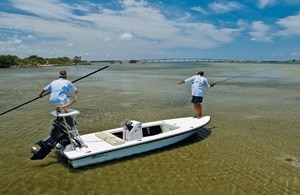
It’s a scene being repeated everywhere tails pierce the surface and tides turn. From Monomoy Island and Gardners Bay to the low-country maze of the Carolinas and Georgia and throughout the Sunshine State and Biloxi Marsh to the ankle-deep expanses of Laguna Madre, anglers are pursuing game fish in the briny shallows with ever-increasing frequency.
Conservation efforts have been a major impetus in this trend. Regional bans on entanglement nets and stricter bag and size limits have improved inshore fish populations, making light-tackle enthusiasts the beneficiaries. But accessibility has been a major contributing factor as well.
“Shallow-water fishing takes less time and costs less than running offshore for the day,” explains Scott Deal, president of Maverick Boat Company, one of the top builders of skiffs and flats boats. “You can sneak out for a couple of hours and have a very good chance of success. And now, fuel costs being what they are, it’s more economical, too. With our new Micro Mirage that’s priced in the low $20,000s with a 40-horse four-stroke, you can fish all day and maybe burn 5 gallons of gas if you try real hard.”
Accessibility is a double-edge sword, however. As more people stay inshore, pressure on popular flats increases considerably. This forces hard-core anglers into making runs to remote bays and estuaries where boats drafting only inches of water can put them within casting range of unmolested targets. The fish won’t necessarily be that shallow. But getting across barely submerged oyster or sand bars to reach them can be an impediment. Which is why builders like Deal and others are constantly looking for ways to lighten boats and reduce draft.
“In the mid-’90s, we started with a clean sheet of paper to design a technical poling skiff that would have zero hull slap and minimal pressure push,” Deal said. “Flat-bottoms draft the least amount of water of any hull shape. They also ride rougher, tend to skate in the wind and are more difficult to pole. Modified V-bottoms handle a chop better and track well, but they also draw more water. Ideally you blend the best qualities of each, and we feel we did that with our Mirage HPX line.”
As Maverick and other Florida builders were perfecting skiff designs primarily for the Keys and Indian River Lagoon (before they spread like kudzu throughout the Southeast), a parallel market was booming in south Texas, where approximately 80 percent of the inshore water is less than 2 feet deep.
“We’re all about shallow,” says Cleve Ford of Dargel Boats. “And you can’t get much shallower than with a flat-bottom, tunnel-hull boat. Once you start adding angles, you lose buoyancy.”
The Dargel plant, located in Donna, Texas, just miles from the Mexican border, uses the lower Laguna Madre for its testing grounds.
“My wife’s great-uncle, who started building wooden V-hull boats in 1937, came up with the Skooter design in 1958,” Ford said. “The first ones were 12 feet long, and the Hydrolift tunnel ran the length of the hull. When guys saw how many fish were being caught from Skooters because they could go where other boats couldn’t, the demand took off.”
According to Ford, as the water flows into the 18-inch-wide tunnel, it channels to the engine, mounted on a molded, raised bracket or mechanical jack plate, so it doesn’t overheat. The tunnel also forces air out to minimize cavitation. Acting like a reverse wing, it lifts the water higher than the surrounding surface level and funnels it past the raised propeller. Dargel rigs mainly with propellers from Coastal Props in Corpus Christi. Their cupped, reinforced blades pierce the water’s surface by only a couple of inches.
Dargel also adds custom cavitation plates to all its tunnel boats to further improve shallow-water performance. The rectangular device, which slides over the factory plate on the engine, works with the torque of the outboard to lift the stern. It also keeps the tunnel water formed tightly in a true stream around the prop and enhances the hole shot by reducing stern squat on initial acceleration.
“Some of our boats draw just under 6 inches at rest,” Ford says. “If you shift coolers or gear to offset the weight of the engine, they’ll draw 412 inches during a drift. When you’re fishing ankle-deep water, an inch of draft means a big difference.”
The flat-bottom tunnel hull does have drawbacks, however. With so little surface area making contact with the water, handling is more temperamental than with V-hulls.
“On plane, there has to be enough boat in the water so it doesn’t act like a cork,” Ford explains. “If not, and the keel catches the wrong way, there’s a chance of flipping around on a dime. There’s a fine line between skinny and dangerous.”
Besides hull characteristics, weight plays another critical role in a boat’s draft. The more a boat weighs, the more water it displaces. When it comes down to inches, everything is subject to a diet, including the hull and gear. Maverick uses blends of E-glass, S-glass and carbon fiber and Kevlar, along with high-density PVC-foam coring to produce hulls that are strong yet light. They also vacuum-infuse the core for the right resin-to-glass mix. Other companies, like East Cape Canoe based in Central Florida, take the process one step further.
“All our components, the hull, stringers, liner, cap and hatches, are vacuum-infused,” says ECC co-owner Kevin Fenn. “We put dry laminate into the mold, inject resin and then suck the excess resin out to reduce any unnecessary weight. We end up with a 50/50 blend of resin and glass.”
Fenn says many of his customers are professional guides who pole several hours during the course of a normal fishing day. They typically choose the Kevlar lay-up option to keep the boat as light as possible.
“When it comes to skiffs, less is definitely more,” Fenn says. “For that reason, I encourage our customers to go minimal, try the boat out for a couple weeks and then bring it back so we can add whatever other accessories they really need, like a PowerPole. We also get the guys who order the kitchen sink, but they’re not as concerned about draft as the pros.”
East Cape builds four models, two hybrid canoes and two skiffs, for the growing flats market. The draft ranges from 2 to 6 inches, and Fenn says that level is determined by measuring the waterline against the hull with a full tank of fuel, two anglers weighing at least 200 pounds and a full day’s worth of gear.
“Nearly every one of our sales leads starts out with the guy saying, ‘I’m getting out of my big boat and going smaller,'” Fenn told me. “With the market and skyrocketing fuel prices, I don’t see that changing anytime soon.”
Smooth Operator
Follow these tips to avoid damaging seagrasses and other bottom habitat when fishing skinny water:
Wear polarizing sunglasses that reduce surface glare to help spot shallow areas. When underway, scan ahead and be aware of your surroundings.
Know your boat’s limitations for running and takeoff draft. If the depth is questionable, slow down and idle. A muddy trail behind the boat means you’re probably uprooting seagrasses. Drift, pole or use a trolling motor whenever possible.
If you run aground, never try to motor your way out. It could cause major damage to the bottom habitat and ruin your engine. Pole or walk the boat to deeper water instead.
Run in existing marked channels or deeper water to access the flats. Learn the shapes and markings of signs designating shallow or no-motor zones.
Use navigational aids or local boating guides to become familiar with shallow-depth areas. Take into account wind speed and direction, tide times and weather forecasts when planning a trip.
– Sources: Florida Fish & Wildlife Conservation Commission and Texas Parks & Wildlife Department





